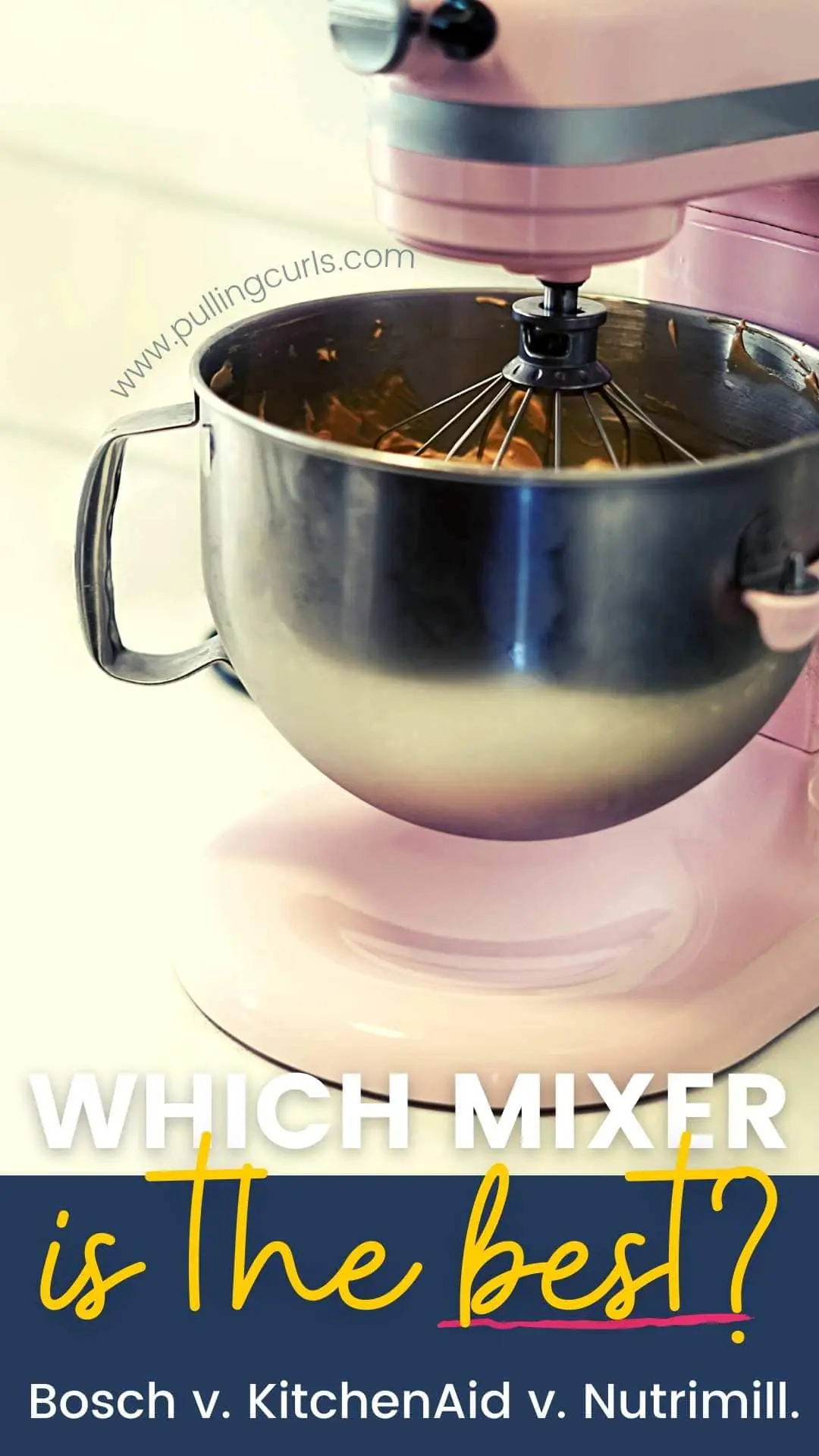Pizza dough has a lower ratio of water to flour and usually has oil added, while bread dough has a higher ratio of water to flour. The main difference between pizza dough and bread dough lies in their water-to-flour ratio and adding oil to pizza dough.
This impacts the dough’s texture, structure, and extensibility, making pizza dough stretchier and more pliable, while bread dough is softer and has a lighter crumb. Understanding these differences is crucial to achieving the desired results when baking pizza or bread.
So, let’s dive deep and explore the variations between pizza and bread dough.

Credit: m.youtube.com
The Difference Between Pizza Dough And Bread Dough
Pizza and bread dough may appear similar, but key differences give each unique characteristics. Understanding these differences is important for achieving the desired results when making either pizza or bread. Let’s look at the distinction between pizza dough and bread dough.
Pizza dough: lower water to flour ratio, oil added
Pizza dough is typically made with a lower water-to-flour ratio than bread dough. This means less water is used in pizza dough for the same flour. The lower water content results in a denser, chewier texture ideal for supporting toppings and maintaining shape during baking.
Additionally, oil is typically added to pizza dough. The oil contributes to the flavor and texture of the dough, creating a slightly crispy exterior while maintaining a soft and chewy interior. It also helps with the browning process during baking, giving the crust that desirable golden color.
Bread dough: higher water to flour ratio
In contrast, bread dough has a higher water-to-flour ratio than pizza dough. This higher hydration level creates a lighter, airy texture in the final bread product. The increased water content allows the yeast to develop and ferment better, producing a well-risen bread with a soft and fluffy crumb.
The higher water content in bread dough also contributes to a longer fermentation process. This extended fermentation time allows the yeast to develop more complex flavors, resulting in a more pronounced taste in the final bread product.
In summary, the key differences between pizza dough and bread dough lie in the water-to-flour ratio and the addition of oil. Pizza dough has a lower water content, making it denser and chewier, while bread dough has a higher water content, resulting in a lighter and airier texture. With this understanding, you can confidently choose the dough for your desired culinary creation.
Taste And Texture Comparison
Regarding taste and texture, there are distinct differences between pizza dough and bread dough. Each type of dough offers a unique experience for the palate, ensuring that pizza lovers and bread enthusiasts can enjoy their favorite baked goods.
Pizza Dough: Chewy, Crispy Crust
One of the defining characteristics of pizza dough is its chewy and crispy crust. The combination of ingredients, including a lower ratio of water to flour and the addition of oil, contributes to the distinct texture of pizza dough. The lower water content allows the dough to develop gluten, resulting in a chewy crust that offers a satisfying bite. Meanwhile, adding oil helps create an outer crispiness that contrasts perfectly with the dough’s chewiness.
Bread Dough: Soft, Fluffy Texture
In contrast to pizza dough, bread dough boasts a soft and fluffy texture. With a higher ratio of water to flour, bread dough takes on a lighter and more delicate consistency. The additional moisture helps the dough rise more significantly, creating air pockets within the bread, resulting in its fluffy texture. Whether a traditional loaf or a sandwich bread, bread dough offers a pillowy softness that can be enjoyed with every bite.
It is important to note that while pizza dough is known for its chewy and crispy crust, it can also be used to make bread. By simply adjusting the ratio of ingredients and baking techniques, pizza dough can transform into soft and fluffy bread and retain its durability to hold up against fillings and toppings.
Conclusion
When choosing between pizza dough and bread dough, the taste and texture preferences play a significant role. Pizza dough delights with its chewy, crispy crust, while bread dough offers a soft and fluffy texture. Whether you are in the mood for a classic pizza or a comforting loaf of bread, both types of dough have unique characteristics that add to the overall enjoyment of these baked goods.
Shopping And Ingredients
When it comes to making delicious pizzas or homemade bread, understanding the differences in the ingredients and shopping for the right items is essential. Both pizza dough and bread dough require a few common ingredients, such as flour and yeast, but they also have unique components that give them distinct characteristics. Let’s delve into the specific ingredients needed for pizza and bread dough.
Pizza dough: flour, yeast, and oil
To create the perfect pizza dough, you’ll need a combination of high-quality flour, yeast, and oil. When shopping for flour, look for strong bread flour or Italian “00” flour, which has a higher protein content. This protein in the flour forms gluten networks that provide the necessary elasticity and structure to the dough, resulting in a chewy and light crust.
You can choose between instant or active dry yeast for the yeasting agent. Both types of yeast work well for pizza dough, but instant yeast, often called rapid-rise or quick-rise yeast, requires no proofing and can be added directly to the dry ingredients.
Oil is a crucial ingredient in pizza dough as it helps to enhance the crust’s flavor and texture. A good-quality olive oil or vegetable oil can be used. The oil adds moisture and tenderness to the dough and aids in achieving a crispy and golden crust during baking.
Bread dough: flour, yeast, water
Unlike pizza dough, bread dough has a simpler ingredient list consisting of flour, yeast, and water. When selecting flour for bread dough, choose bread flour or all-purpose flour, which has a moderate protein content. This protein is necessary for gluten development, giving bread its desirable structure and texture.
For yeast, you can use either instant yeast or active dry yeast, depending on your preference. Both types work well for bread dough and contribute to the dough’s fermentation and rising process.
Water is the primary liquid in bread dough, and using the correct water temperature for yeast activation is crucial. Warm water, around 100-110°F, helps activate the yeast and kickstarts the fermentation process.
| Pizza DoughBread Dough | |
|---|---|
| Flour | Flour |
| Yeast | Yeast |
| Oil | Water |
In conclusion, pizza and bread dough require basic ingredients such as flour and yeast. However, pizza dough includes oil, contributing to its unique flavor and texture, while bread dough relies solely on water for hydration. Understanding the ingredients and their roles is essential for creating the perfect crust, whether making a delicious pizza or a homemade loaf of bread.
Frequently Asked Questions On Pizza Dough Vs Bread Dough
Baking pizza dough like bread creates a chewy loaf with enough structure to hold fillings.
The main difference between bread and pizza is the ratio of water to flour. Pizza dough has a lower ratio, while bread dough has a higher ratio. Additionally, pizza dough usually contains oil.
The taste of your pizza dough may be similar to bread due to the ratio of water to flour used in the dough.
You can use pizza flour to make bread, but it may not yield the best results.
Conclusion
Pizza dough and bread dough have their unique characteristics and purposes. Pizza dough is designed to be stretchy and resilient, allowing it to be shaped and topped with various ingredients. On the other hand, bread dough is meant to be softer and chewier, providing the base for a satisfying loaf of bread.
The difference lies in the ratio of water to flour, with pizza dough having less water and sometimes oil added. Pizza dough for bread can have a tougher texture while baking pizza dough for bread can yield a chewy loaf.
However, it is important to note that both types of dough can be versatile and used for different purposes depending on personal preference. Whether you’re making pizza or bread, you can achieve the desired outcome by understanding the differences between pizza dough and bread dough.
It ultimately comes down to the specific recipe and technique used. So, experiment and have fun with your dough creations!

As the author of the “Ultimate Pizza Guide: Recipes, Tips & Secrets Revealed,” I’m dedicated to sharing my love for pizza and empowering others to create delicious homemade pizzas with ease. Join me on a journey to uncover the secrets to perfecting your pizza game!



